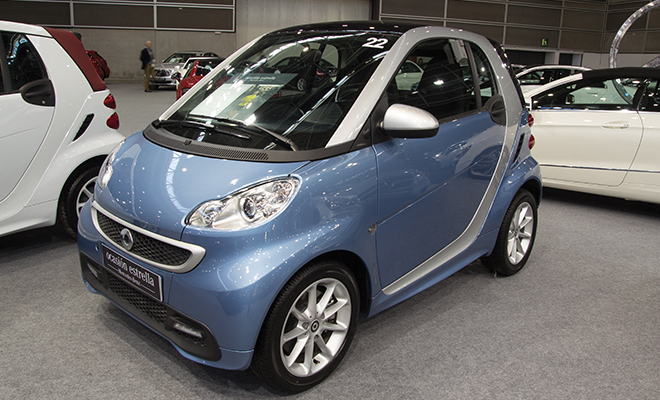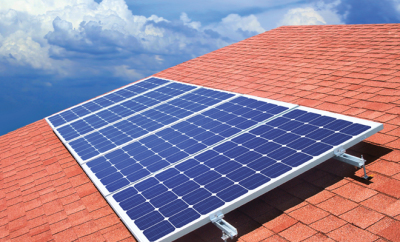
Green Living
Green Cars: Less Green Spent at the Gas Pump
I entered the world of green cars last year when my husband and I made the decision to sell his gas-guzzling Dodge pickup and buy a new gas-sipping Chevy Spark. When my college-age daughter saw it, she instantly asked, “Is it electric?” I replied, “No, it uses gas and gets an estimated 31 mpg in the city and 39 mpg on the highway.”
We’re comfortable with our choice and the new savings. For her, the electric car would be ideal because she lives in the inner city and drives short trips. Plus, she has some access to power stations in her area. However, we live on the outskirts and take longer trips out of town. Those are just some of the considerations buyers need to make when deciding which green car suits their lifestyle.
Earth-friendly green cars include gas/electric hybrids, all electric, diesel and fuel-sipping gas-only cars. In the world of these vehicles, we have certainly come a long way since the introduction of the Toyota Prius in 1997.
The playing field has grown tremendously for 2015 in the green car and truck industry. Although hybrids usually get better gas mileage than conventional cars, they also cost more. To determine if the added cost is worthwhile, there is an efficiency-cost rating to reflect efficiency bang for your overall buck. Take the combined city/highway mpg divided by the base MSRP and multiply that number by 1,000. This formula can be applied to any vehicle type, hybrid or not. A high mpg rating and low price yield a high efficiency-cost rating. The goal is to pay the least for the most mileage, barring other considerations.
A hybrid electric vehicle (HEV) combines a conventional internal combustion engine propulsion system with an electric propulsion system. The presence of the electric powertrain is intended to achieve either better fuel economy than a conventional vehicle or better performance.
The new crop of green vehicles entices the younger generation, as well as those a bit more acquainted with driving Trans Ams and minivans.
A top list includes the Smart Fortwo 1.0, which boasts a 68.9 mpg rating. On the inside, driver and passenger alike benefit from the fact that Fortwo boasts the most interior space in relation to the size of any car in the segment.
The new Kia Soul EV is the result of almost 30 years of research and development into the feasibility of electric vehicles at Kia. A lithium-ion battery gives the Soul EV an official range of 132 miles. It comes with Kia’s seven-year warranty.
The Mazda 2 SKYACTIV D 1.5 has the SKYACTIV body, chassis, and automatic transmission plus the company’s innovative MZD Connect in-car connectivity system and adheres to rigorous emissions standards. The diesel has a rating of 83 mpg.
Volvo XC90, a plug-in hybrid, will offer four-wheel drive and for the first time there will also be a front-wheel drive option. The XC90 PHEV will also feature a collection of entertainment and safety technology including a 9.3-inch screen compatible with Apple’s new CarPlay interface and Volvo’s new collision avoidance system.
Toyota is taking the new Mirai, which means “future” in Japanese, to the UK in September 2015. Powered by a 153-horsepower fuel cell stack, the Mirai is capable of 0 to 60 mph in around 9 seconds and has a range of over 300 miles. Its refueling time is under 5 minutes, and it does require the new-age hydrogen station, which may be hard to find.
Tesla’s Model X electric-CO2 car rounds out the green list for 2015. It promises dual motor all-wheel drive, a choice of two battery capacities, additional seating and rear Falcon doors, which open upward instead of swinging outward and provide easier access to rear seating. New orders for the Model X will be delivered in 2016.
Mercedes-Benz comes in high with its Mercedes-Benz B-Classic Electric Drive-CO2. The Mercedes-Tesla relationship shows in the B-Class ED with the drivetrain and battery pack coming from the California-based company. Capable of 125 miles per full charge, the B-Class ED reports CO2 emissions at 64 percent lower that the equivalent B-180 gasoline model.
Mercedes-Benz has long been in the forefront of green innovation. The company’s BlueTEC Clean Diesel models are available in all 50 states; this technology uses a solution called AdBlue, which, when injected into the exhaust, converts nitrous oxide emissions into harmless nitrogen and oxygen. Their flexible fuel vehicles, available in the C, E and M classes, give the driver a choice at the pump of filling with gasoline or E85 ethanol, a widely available fuel that’s 15 percent gasoline and 85 percent ethanol, derived from corn and other grains and can reduce greenhouse gas emissions by up to 70 percent.
Now that you know what’s out there, ask yourself if you’re ready to help save the world, not to mention save some money? Why not! Do a bit of research and you’re sure to find a new-age vehicle to suit your needs. HLM
Sources: cars.com, caranddriver.com, greencarcongress.com, mbusa.co, nextgreencar.com and wikipedia.com.









